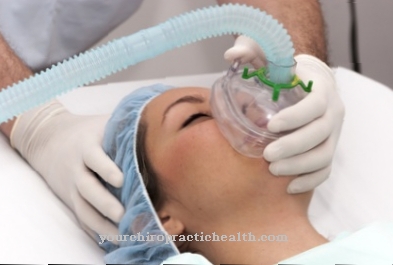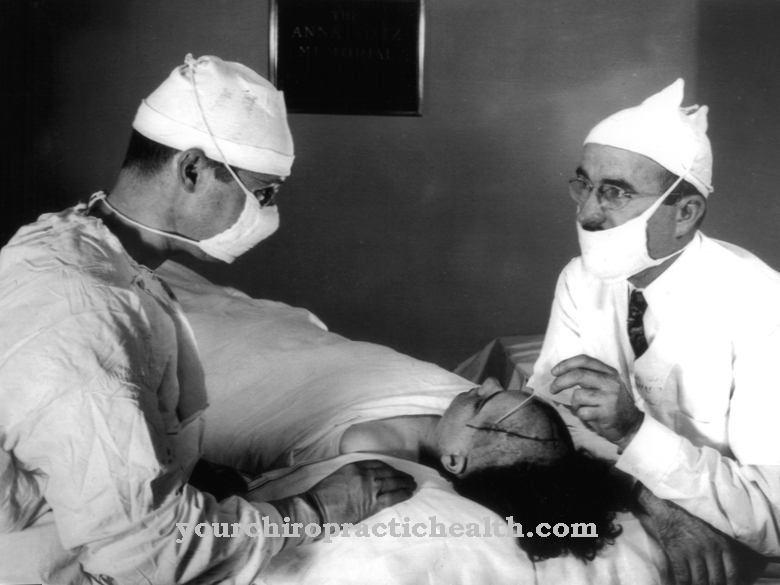As the name suggests, it is the Thrombosis prophylaxis a therapeutic measure for the prevention of thrombosis. Blood clots are dangerous in the further course of embolism and heart attacks.
What is thrombosis prophylaxis?

A thrombosis is a blood clot (thrombus) that forms in the human vascular system or in the heart. Such a clot is caused by blood clotting.
This actually has the function of preventing the body from bleeding to death in the event of an injury by closing wounds through the clumping of the blood. However, clumps sometimes also occur in uninjured vessels, which can lead to the formation of a thrombus. This obstructs the blood flow and can have very serious consequences.
For example, a clot in an artery can cause a stroke or a heart attack. Both are caused by insufficient blood flow to the heart or parts of the brain. A thrombus in the veins can result in pulmonary embolism. In fact, most thrombosis occurs in the veins.
Function, effect & goals
Since a thrombosis can be accompanied by very different symptoms and rapid action is always required, this is the Thrombosis prophylaxis particularly important. When in doubt, it can save lives. Although the various preventive measures cannot always prevent thrombosis, the risk can be significantly reduced.
The most important factor in thrombosis prophylaxis is exercise. Most thrombosis occurs in the deep veins in the leg, especially in the calves (deep vein thrombosis DVT), so it is important to keep this area moving. Almost all endurance sports such as swimming, cycling, jogging or walking are suitable for this, because they stimulate the blood flow in the veins of the leg. But dancing can also be beneficial. Long walks are also suitable for older people.
Sports that are unsuitable for thrombosis prophylaxis are those in which abrupt starts and stops take place, as is the case, for example, when playing tennis. In addition, there is special vein gymnastics for risk patients, but also for anyone else interested.
Exercise is also important when there are times when you have to sit relatively immobile for longer, such as when traveling long-distance. If possible, you should get up and take a few steps as often as possible on longer trips. If this is not possible, exercises with the feet, in which the legs are moved, are also suitable. Such exercises are also very suitable for thrombosis prophylaxis in office jobs where you work sitting all day. If physical exercise is not possible, compression stockings are recommended, which facilitate the blood flow in the veins and thus minimize the risk of thrombosis.
But standing for long periods of time can also have a negative effect and should be avoided, especially for high-risk patients. Adequate hydration is another important factor in thrombosis prophylaxis. Healthy people should drink around 1.5 liters per day, especially drinks such as tea, mineral water or juice spritzers. Alcohol and coffee are unsuitable for thrombosis prophylaxis because they drain the body and increase the risk of a clot. Other risk factors for the formation of clots are obesity and smoking. Weight loss, a balanced diet and quitting smoking all help to reduce the risk of thrombosis.
Patients who are already being treated for thrombosis (as a precautionary measure), for example with the anticoagulant heparin, should make absolutely sure to take their medication exactly as instructed by the attending physician.
Risks & side effects
The Thrombosis prophylaxis essentially consists of avoiding unnecessary risks. The risk of getting a life-threatening blood clot can be traced back to three factors, which unfortunately cannot all be influenced by rules of conduct.
Too slow blood flow can be caused by prolonged lack of exercise. Movement naturally helps, but is not always possible, for example if you are bedridden for a long time. Varicose veins, some heart diseases and external pressure on the vessels are also a great danger in terms of thrombosis.
Damage to the vessel walls promotes coagulation, which can lead to thrombosis. These can arise due to injuries, but also as a result of illnesses and infections.
Some other factors cause blood clotting to change. Some of these factors can be influenced and are therefore important for thrombosis prophylaxis. Dehydration, smoking, being overweight and taking hormone preparations are some of the factors that can be influenced. For thrombosis prophylaxis, switching off all unnecessary risks is inevitable.













.jpg)

.jpg)
.jpg)











.jpg)